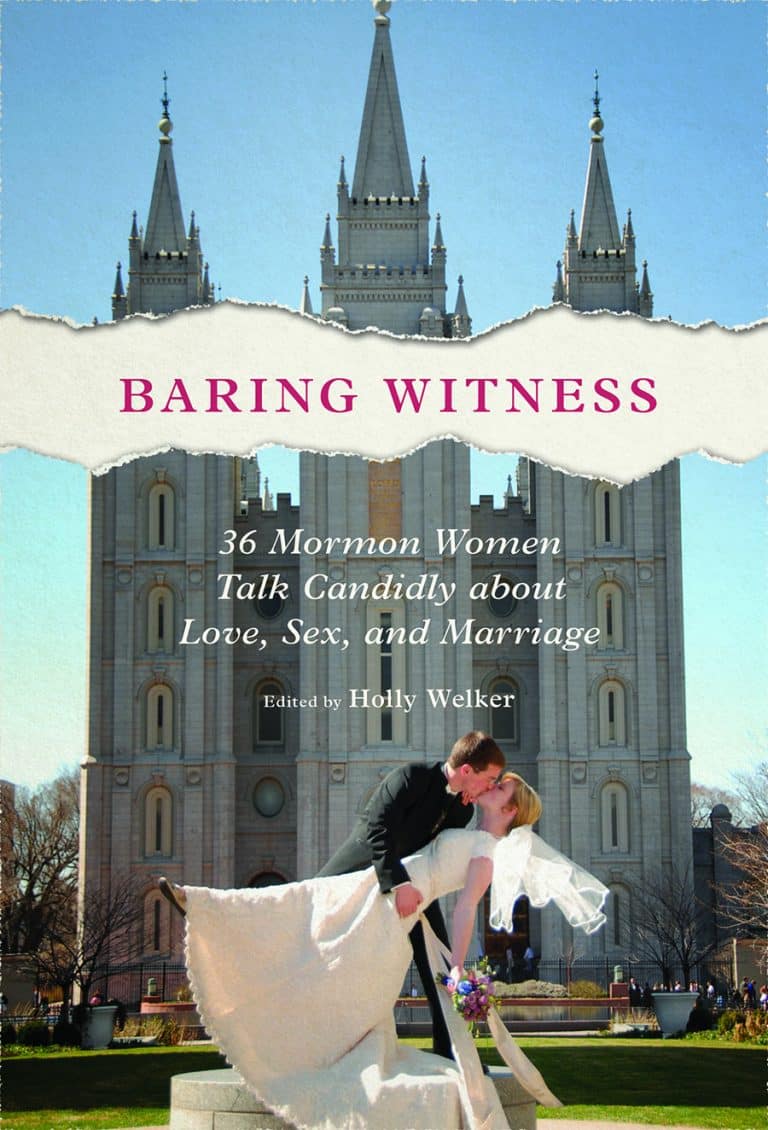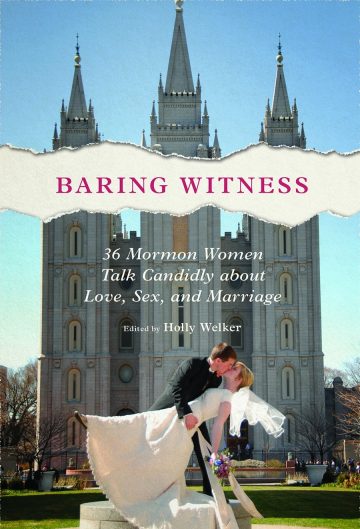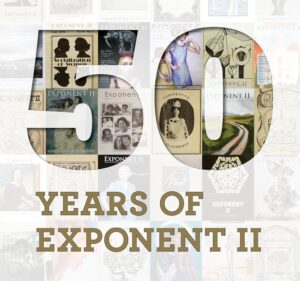
Baring Witness: 36 Mormon Women Talk Candidly about Love, Sex, and Marriage is a collection of personal essays that you’d never hear at a sacrament meeting. These are not your average Fast Sunday testimonies. They are not censored experiences that people will share at church to promote faith. These stories go into depth and pain and discuss what the writers experienced and how church teachings influenced them. The writers talk about both the good and bad times and their thought processes.
In the introduction, Editor Holly Welker wrote, “Religious orthodoxy was not a concern as I gathered these essays; instead, my concern was with a writer’s willingness to scrutinize how Mormon belief and practice shaped her ideas and experiences of marriage, regardless of whether she remained active and devout” (14).
I absolutely enjoyed this book! Though some of the stories were full of sorrow, there were also a good number of stories with happy endings. I appreciated the variety of stories and perspectives. I believe it’s important to read another’s story, because it opens our minds to new perspectives and helps us see beyond the surface. This is why I was so interested in this book!
Many tough issues are brought up in this book: interracial marriage, depression, faith loss, OCD, being single, women’s education, divorce, widowhood, lack of communication in a marriage, work-life balance, and many other things. There are stories of people marrying in the temple and outside the temple. There are stories of women resisting being assigned to a gender role. There are stories of women losing their faith in the church or who had a husband who lost his faith. There are also stories of women deciding whether or not to continue their education. There are a couple of stories about same-sex attraction and one about polygamy.
I liked this book so much because it reveals the truth and doesn’t hide the hard things. Often people see a picture of a temple and assume that a temple marriage will always be a happy and successful marriage, but that doesn’t always happen. I was shocked when a few women in the stories got married in the temple despite feeling something off about their fiance. With some of the stories, I was very surprised and thought to myself, “How can this happen? I had never thought that something like this could happen to someone.” For example, in one story a woman developed OCD after having kids and it was so serious that she couldn’t even go grocery shopping.
A few things were really funny in this book, such as one woman’s story about how on her mission, the mission president’s wife read to the sisters from a book that gave advice on how to attract a husband. The part that really made me laugh was this suggestion: “…pretend to be afraid of cows as an excuse to grab the arm of a male companion” (64). Obviously, the writer didn’t follow through with that suggestion. Another thing I found funny was the idea that asking someone on a date or replying to a date had to involve some big, time-consuming, creative scenario. I grew up in the Midwest, so I had never heard of this kind of thing that apparently happens in some LDS communities.
I especially loved this quote: “…we each saw each other as a complex person rather than as roles or pieces in a puzzle” (107). Many of the women in these stories struggled with the church’s gender role expectations. This really resonated with me because I too feel the weight of being told to fit into a role. When church members talk about women’s roles, it always feels to me like they’re trying to stuff me in a box. I like stories in which women are able to free themselves from these expectations and instead follow their own path and the path that God leads them to.
The essay “Departures” was especially heartbreaking, but the author learned from this experience that “one is a whole number” (134). This story talked about two different experiences that a woman and her cousin had. The writer had lost her husband to divorce, while her cousin had lost her husband to cancer. The writer remarked that the ward members helped her cousin immensely, but they didn’t help the writer because divorce is taboo in the church. In both situations, a woman was separated from her husband, and the people helped one and ignored the other all because of divorce.
I really appreciated the stories about education. One writer got a good education and later said, “I never find myself wishing I had less education or less earning potential” (246). I also liked that there was an essay about being single. When we discuss topics like marriage, it’s important to hear the single’s perspective as well. One of the great things about this book is that it specifically talks about issues found in LDS marriages, since there are certain issues that are peculiar only to LDS marriages.
I highly recommend this book to all LDS women because I’m sure many of these stories will resonate with most women. The book shows that each person is a complex individual, trying to do the best they can under their circumstances. This book can inspire people to not accept things blindly and also to break free from the constraints of gender roles. If you enjoy reading stories about LDS women, about both the hard times and the good times, this book is definitely for you.
[amazonjs asin=”0252081781″ locale=”US” title=”Baring Witness: 36 Mormon Women Talk Candidly about Love, Sex, and Marriage”]






3 Responses
For anyone who, like me, prefers eBooks this is available in Kindle format.
I loved the diversity of perspectives in this book. Holly did a great job of getting breadth and depth. This is a book I could have used at my wedding shower!
Interesting how a book about women complaining about genders sells. Do you think anyone would find a book about men doing the same interesting? No, of course not. Women, including those in the church, have become such weak snowflakes who don’t measure up to women of the past. I guess feminism and birth control are part of the reason.